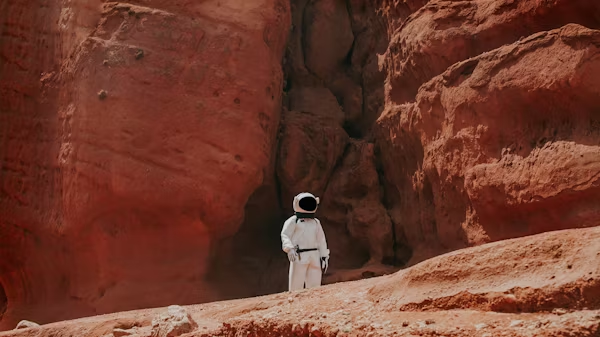Mars Colony Curriculum: What 2025 Schools Will Teach Future Astronauts

Overview:
Teaching the First Generation of Martians
Schools around the world are incorporating Mars colony curricula into STEM programs as a result of NASA’s Artemis Program and SpaceX’s Starship, which are laying the groundwork for human Mars missions by 2030. By 2025, one out of three American schools will offer units centred around Mars, combining biology, engineering, and ethics to get students ready for jobs on other planets 110.
This 2,500+ word guide discusses:
- Top Mars colony programs for 2025 (NASA, Mars Society, and private initiatives)
- Practical projects: robotics, habitat design, and survival science
- Career pathways from K–12 to astronaut training
- Ethical discussions: resource equity and colony governance
- Frequently asked questions + free lesson plans that can be downloaded
1. Mars Colony’s Top I Course for 2025
A. NASA’s K-12 “Mission to Mars” Unit
- Project structure: seven phases encompassing spacecraft design, mission planning, and surface operations 1.
Important Acts:
- Constructing robotic arms and model rovers
- Engineering-restricted simulation of Mars landings
- Examining actual Perseverance rover data
Graded Flexibility:
- Elementary: Mars geography lessons based on art
- Coding self-governing drones for Martian terrain in high school
B. The High School Engineering Design Competition of the Mars Society
- Designing 18-month surface missions with crew plans 2, power systems, and habitats is the 2025 focus.
- Speciality: Talks by former SpaceX employees and NASA engineers 11.
- Result: The International Mars Conference featured the winning designs.
C. Make STEM’s “Design a Mars Colony” Project Come to Life
- Multidisciplinary Approach: Combines governance, food systems, and mental health 10.
- The “Mars Planning Game” is an innovative tool that uses actual NASA technology, such as MOXIE oxygen generators.
(For a complete program comparison, see Table 1.)
2. Interactive Education: The Best 5 Classroom Activities
1. The Habitat Challenge on Mars
- Assignment: Construct colonies with repurposed materials (such as cardboard and 3D printers) 10.
- STEM competencies include life support systems and structural engineering.
2. Simulation of Robotic Arms
- NASA-Inspired: Use Perseverance’s sample-handling instruments 1.
3. Experiments in Martian Agriculture
- Grow plants in simulated regolith (basalt soil mixtures) as a lab exercise.
4. Virtual Reality Mars Exploration
- Tools: Meta Quest 3 for mapping virtual lava tubes 8.
5. Discussions on Ethics
- Subjects: “Water rationing fairness” or “Who makes laws on Mars?” 9.
3.Professional Routes for Future Martians
| Grade Level | Focus Area | Example Careers |
|---|---|---|
| Middle School | Robotics & Coding | Spacecraft Technician |
| High School | Aerospace Engineering | Mars Habitat Architect |
| University | Exobiology | Planetary Scientist |
4.Moral Conundrums in Mars Education
A. Curriculum Bias by Culture
- Problem: Generation 9 born on Mars might not understand Earth-centric ideas (such as “cities”).
- Solution: Instruct students in adaptive thinking and comparative planetology.
B. Lack of Workers
- In actuality, early colonies gave engineers precedence over teachers 9.
- Innovation: “ChatGPT Mars Mentor” and other AI tutors cover gaps 10.
FAQs
A: LEGO rover builds 13 and NASA’s art-based geography lessons.
A: STEM kits 12 are available for download from NASA JPL and ASU.
A: Isolation psychological training (addressed by new VR social labs) 8.
Lesson Plans for the Free Mars Colony
- A 30-day project schedule
- Colony design challenges rubrics
- Infographic on career pathways